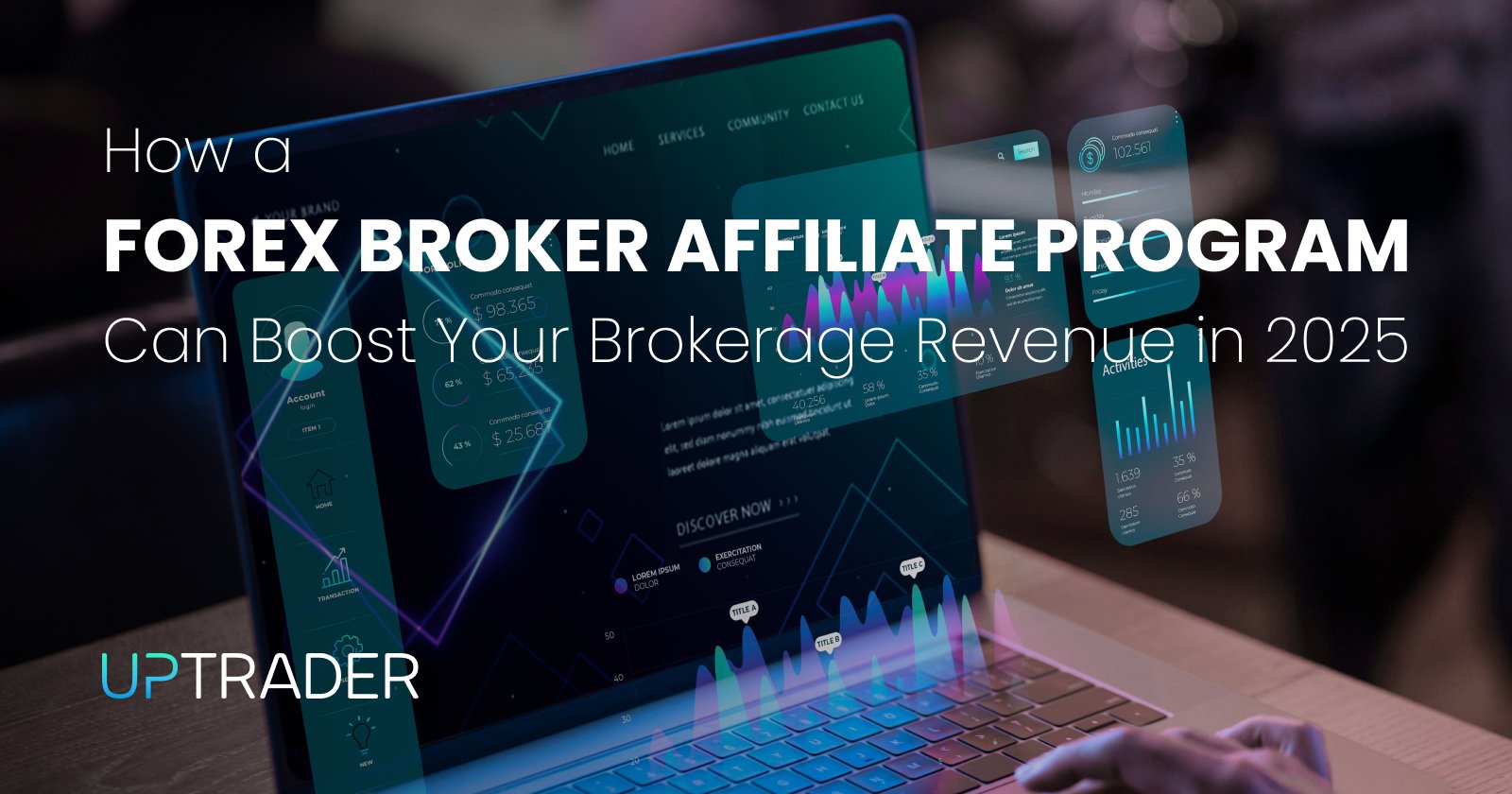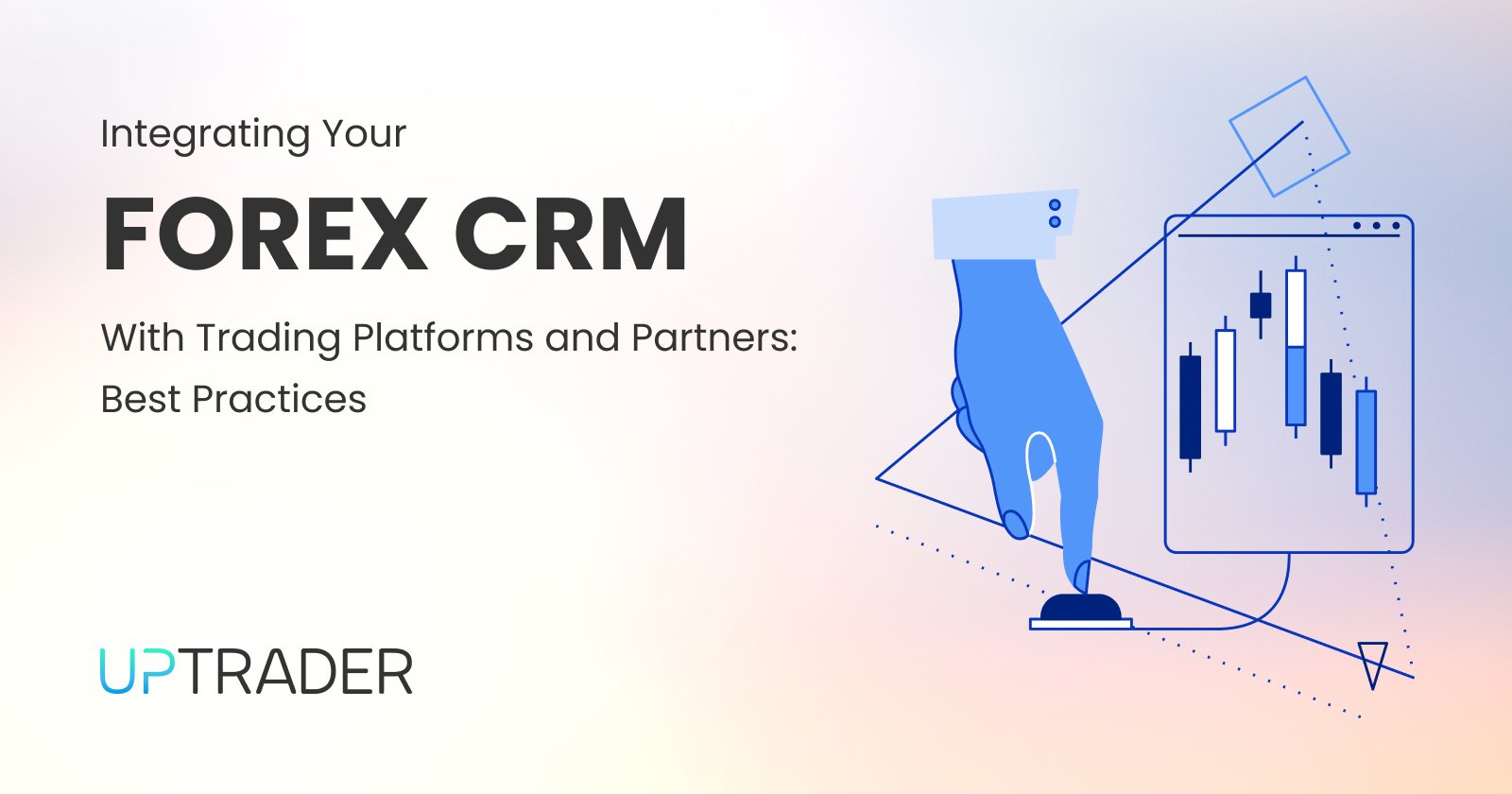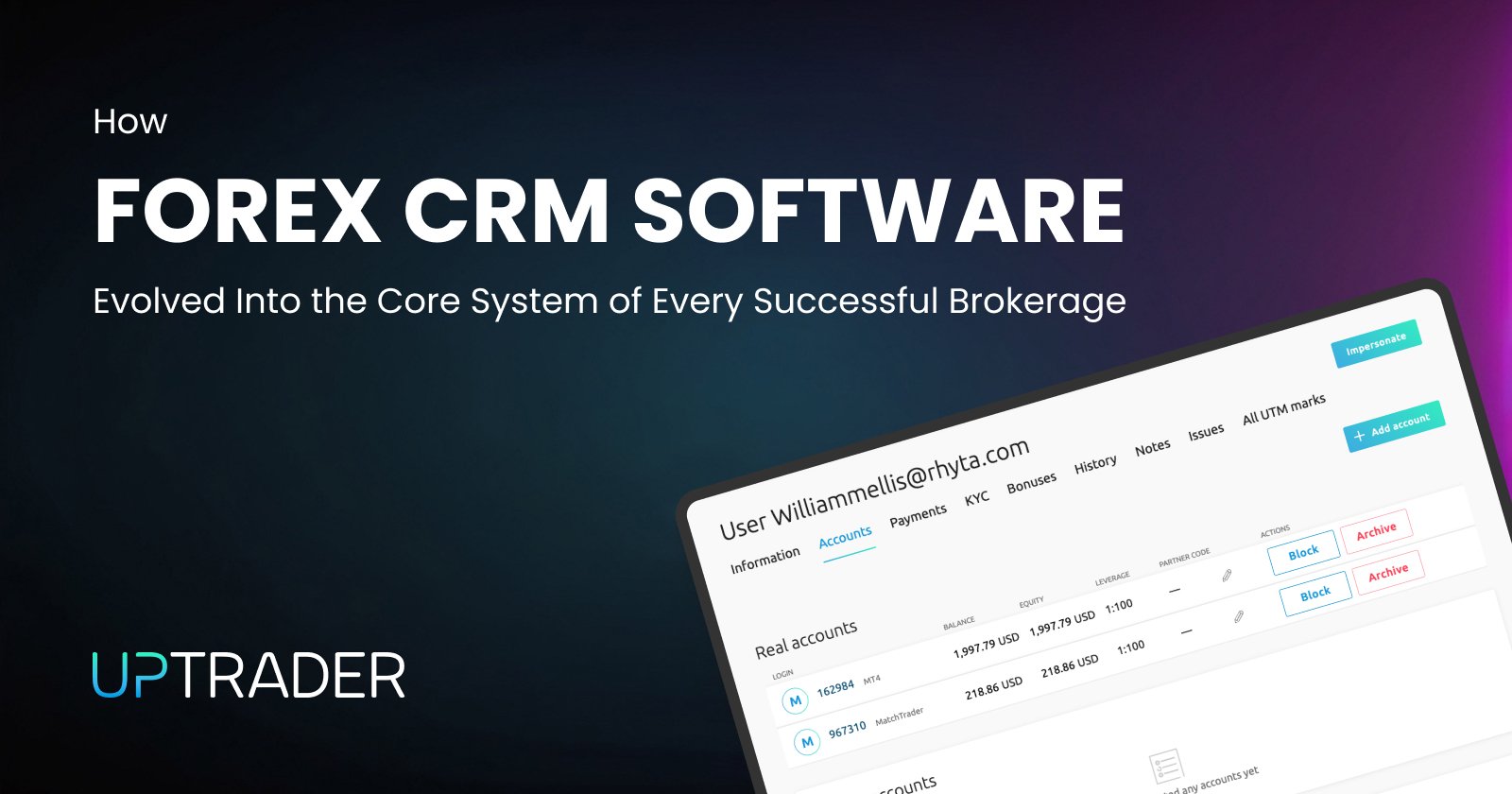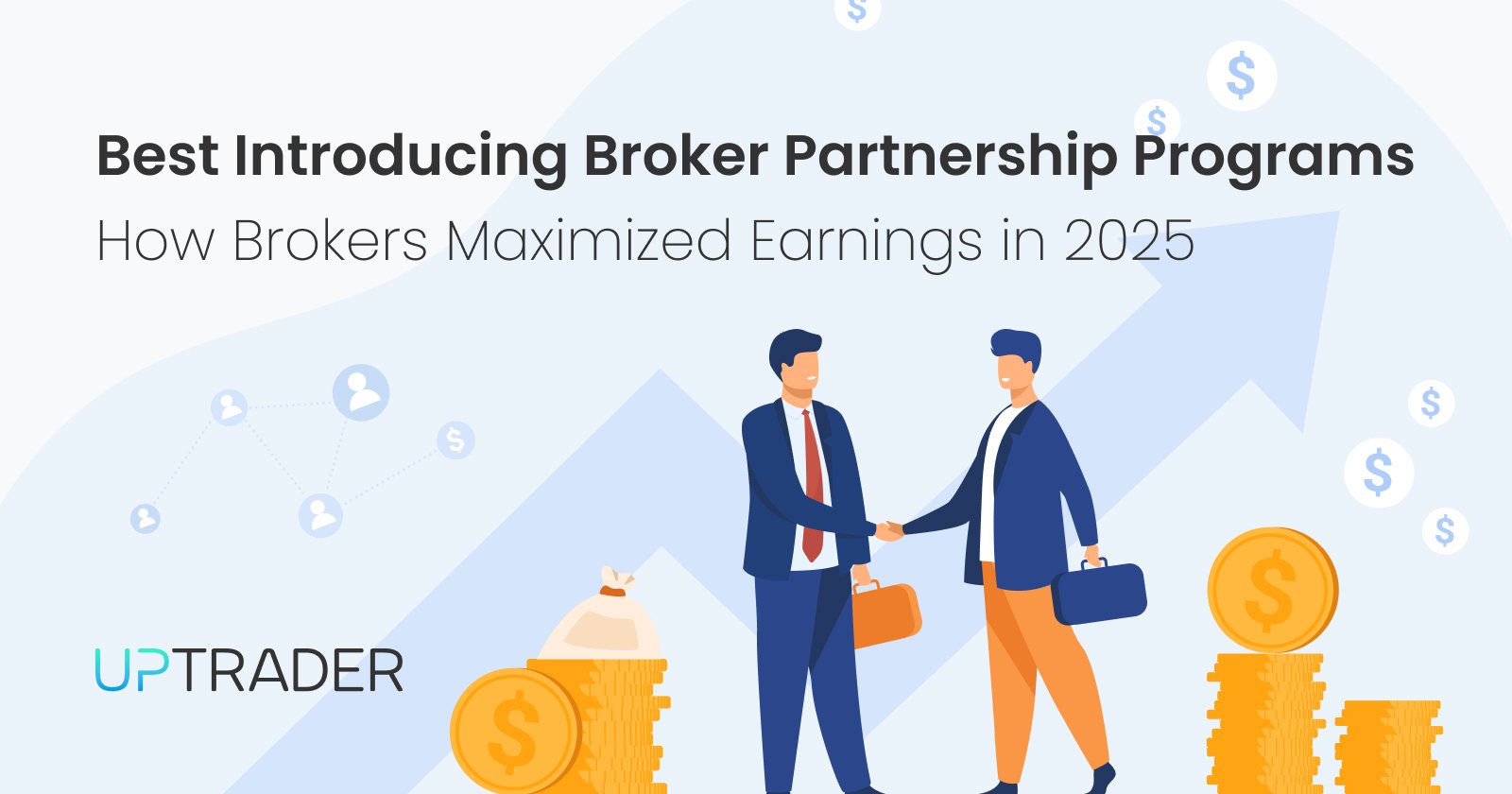How a Forex Broker Affiliate Program Can Boost Your Brokerage Revenue in 2025

Share this publication:
If you run a Forex or multi-asset brokerage in 2025, you’re operating in a world where paid media is more expensive, privacy rules keep tightening, and users bounce between devices before they ever convert. A Forex broker affiliate program — done right — cuts through that noise. It turns credible third-party creators, media owners, and trading educators into an always-on acquisition engine you don’t fully pay for until results arrive.
Below is a practical, research-driven playbook for using an affiliate program to grow predictable, compliant revenue this year. We’ll cover why it works, the economics, commission models, tracking in a post-cookie world, compliance you can’t ignore, and the exact metrics to run your program like a profit center.
Why Forex Broker Affiliate Works so Well
1) You pay for outcomes, not promises. Unlike broad awareness campaigns, affiliate is performance-priced. Commissions (CPA, revenue share, or hybrid) are triggered by qualified actions — usually a verified account plus deposit and minimal trading activity. That aligns incentives: partners only earn when they bring you revenue.
2) Trust transfers faster through people. Retail traders are skeptical. They follow educators on YouTube, Telegram, X, and niche forums who’ve spent years building credibility. When those creators recommend a platform, conversion rates can dwarf cold traffic — especially in emerging markets where one respected voice moves the needle quickly.
3) It scales across channels. In 2025, affiliates aren’t just coupon sites and PPC arbitrage. It spans video-first commerce, live streams, newsletters, and long-form education. Brands that blend classic affiliates with creators, sub-affiliate networks, and media partnerships are seeing the broadest reach. Independent analyses highlight the rise of “video-first” and multi-touch affiliate journeys this year.
4) It survives the privacy squeeze: As third-party cookies phase out in Chrome and privacy controls tighten, last-click tracking is less reliable. Modern affiliate platforms and networks increasingly use first-party data, login-based IDs, and cross-device attribution to keep credit fair and budgets efficient.
The Compliance Backdrop You Can’t Ignore
Forex/CFD promotion is tightly regulated in many jurisdictions. That doesn’t kill affiliate; it shapes it. Keep these pillars front and center:
UK (FCA): Strengthened rules for financial promotions of high-risk investments require standardized risk warnings, no monetary incentives for retail clients, and stricter approval/oversight of promotions. If you target UK users, build these warnings and sign-off flows right into your affiliate assets and landing pages.
EU (ESMA): Product-intervention measures restrict leverage, ban certain incentives, mandate risk warnings, and require negative balance protection for retail CFD traders — standards that many EU brokers or EU-facing entities must reflect in their marketing. If your affiliates promote EU trading, your materials need to match those constraints and disclosures.
Australia (ASIC): ASIC’s product-intervention order standardized leverage caps (e.g., 30:1 on major FX for retail), close-out rules, and risk controls; it’s in force through at least May 2027. Affiliates marketing to Australian retail clients should use compliant creatives and avoid aggressive claims.
Ad platforms (Google): Google allows advertising restricted financial products only after verification/certification, and you must meet local legal requirements in each targeted region. If affiliates run paid media, educate them on geo eligibility and verification so your brand doesn’t get swept into policy violations.
Bottom line: bake compliance into your partner toolkit — pre-approved claims, dynamic risk warnings by geo, incentive rules, and clear affiliate guidelines — to prevent sanctions and keep partners productive.
Commission Models That Move the Needle
You don’t need one perfect plan; you need the right plan per partner type and market.
CPA (Cost-Per-Acquisition): One-time payout when a user meets your “Qualified Trader” criteria (e.g., approved KYC, minimum deposit, and minimal trading volume). Public “up to” numbers vary widely by region and audience quality — industry roundups and broker pages commonly cite CPAs in the mid-hundreds and higher for premium geos. Use ranges as a benchmark, then price to your economics and risk.
Revenue Share: Ongoing percentage of net revenue/trading activity — great for educators with loyal communities who want long-term upside. Typical shares differ by broker and product set. (If you use rev-share, include negative balance protection and leverage notes in your marketing compliance doc for EU/UK traffic.)
Hybrid: Mix of upfront CPA plus smaller ongoing revenue share (or CPL + rev-share). This balances cash flow for affiliates and keeps them invested in trader quality. Many modern programs and networks advocate hybrid structures for scalable growth.
How to choose: Map commission to LTV by market (e.g., Tier-1 geos vs. emerging markets), traffic source (content vs. paid media), and compliance risk. If you’re new, start with a modest CPA plus modest rev-share, then tier up for proven partners who hit quality thresholds (refund rates, chargebacks, trade longevity).
The Economics: Make Sure it’s Profit, Not Vanity
Treat affiliates like a P&L line, not a channel you “have to have.”
Define a Qualified Trader: example — approved KYC, minimum $200–$500 first deposit, and 5+ lots within 90 days. This creates a fair basis for CPA payouts and stops low-intent signups from draining the budget. (Common broker examples publicly list deposit and trading thresholds for affiliate rewards — use yours, not theirs.)
Target a payback window: If your LTV on a cohort is $900 over 12 months, paying $400–$600 CPA on the right traffic might be healthy. But if churn spikes after week 2, your model’s wrong — shift to lower CPA or add rev-share to align incentives.
Tiering: Build tiers on quality, not just volume. E.g., higher CPA if the first-time deposit (FTD) median is above your benchmark and 60-day activity holds. Lower CPA if approvals but no deposits.
Clawbacks: Reserve the right to claw back payouts for fraud, bonus abuse, or chargebacks. Spell this out in your partner T&Cs with examples and time windows. (Most serious programs do; see major broker partner agreements for reference language.)
Tracking and Attribution in a Post-Cookie World
The privacy tide hasn’t receded; Chrome’s third-party cookies are being curtailed, and the web is moving to Privacy Sandbox APIs. Relying only on last-click cookies will under-credit top-funnel creators and over-credit bottom-funnel arbitrage. Here’s what to put in place:
First-party tracking: Place your affiliate scripts server-side and tie clicks to first-party IDs (logged-in areas, email-based identifiers) to survive cookie restrictions and cross-device journeys. Industry guides and platforms emphasize first-party and cross-device attribution in 2025.
Postbacks / server-to-server (S2S): Fire conversion events from your backend to your affiliate platform to reduce reliance on client-side pixels (which can be blocked).
Multi-touch models: Where possible, credit early-stage content touches (e.g., tutorial video → comparison site → direct brand search) so high-quality content creators stay motivated. Analysts and vendors highlight the need for cross-device and cookieless techniques to keep credit accurate.
Geo-aware risk warnings: Attach location-controlled risk statements compliant with UK, EU, and Australian regulations. Seed these risk disclosures on landing pages that draw affiliate traffic; this keeps landing pages leak-proof to avoid adverse attribution when visual banners are blocked, and it keeps your lawyers satisfied.
What Top-Performing Partners Look Like in 2025
Video-first educators and streamers with a structured posting schedule (YouTube, TikTok, Instagram, live webinars). They combine tutorials, platform walkthroughs, and transparent risk education — then point viewers to vetted broker links. Independent trade press notes the rapid rise of video-first affiliate and social commerce.
Niche communities (Discord/Telegram/Reddit) with clear rules and a culture of disclosure. These groups often convert better than broad audiences when you provide co-branded education hubs.
Comparison/media publishers who produce updated broker reviews and tool roundups. They respond well to exclusive offers and custom landing pages with improved UX.
Sub-affiliate networks for fast reach — useful in new markets to discover small creators at scale while you maintain direct relationships with your top partners.
Build your Program: a Practical Blueprint
1) Clarify your “qualified” event.
Set the bar so payouts reflect real value: approved KYC + minimum deposit + minimum trading activity within 30–90 days. Publish the criteria in your partner docs and automate validation. (Plenty of brokers display similar thresholds publicly — copy the clarity, not the exact numbers.)
2) Offer two plans by default.
Plan A (Hybrid): Moderate CPA + modest rev-share for educators and content creators.
Plan B (CPA): Higher CPA for paid-media affiliates who accept stricter traffic-quality rules and fraud screening. Make tiers unlockable with quality metrics (FTD median, verified region mix, 60-day activity).
3) Give partners a conversion-ready funnel.
Geo-aware landing pages with dynamic risk warnings and leverage disclosures.
Short, plain-language value proposition vs. feature walls.
Easy funding, UX, and instant demo access.
Co-branded pages for VIP partners.
(For UK/EU/AU traffic, ensure your warnings and incentive policies match FCA/ESMA/ASIC rules.)
4) Tooling for 2025 realities.
Server-side postbacks to your affiliate platform.
Deep links to app/web (with fallback).
Cross-device attribution via first-party IDs where possible.
Fraud checks: velocity rules for signups, device fingerprints (privacy-respecting), and deposit verification.
5) Partner enablement that feels premium.
Provide a library of pre-approved creatives by language and region, sample scripts for videos, editorial calendars around market events, and a Slack/Discord for faster approvals. Add an “idea bounty” pool: pay flat fees for content briefs you request (e.g., “Trading Platform 5 mobile tutorial for beginners”), then layer commissions on top.
6) Pay on a cadence partners love.
Weekly payouts with low thresholds keep small creators engaged and compound your reach — a common practice in competitive CPA verticals. Publish exact payment windows, methods, and clawback rules. (Leading programs and directories highlight weekly or on-request payouts in 2025.)
Measurement That Keeps You Honest
Track these five metrics per partner and per market:
Approval-to-FTD rate (approved accounts that deposit). If it’s <25% on a partner who pushes bonus-seeker traffic, lower CPA, or migrate them to a hybrid.
FTD median and 80th percentile. Absolute FTDs matter, but distribution tells you who attracts serious traders.
60-day active rate and 90-day lots traded per acquired user. Those numbers predict 12-month LTV far better than day-1 deposits.
Chargebacks/bonus abuse rates. Publish thresholds where penalties or tier downgrades apply.
Geo compliance score: percentage of impressions served with correct risk warnings and incentive rules by jurisdiction (UK/EU/AU). Non-compliant partners pause automatically until fixed.
Common Pitfalls — and How to Avoid Them
Paying for volume, ignoring value. Tie tiers to quality metrics (LTV, activity), not just FTD counts.
Cookie-only tracking. You’ll under-credit creators and over-credit last-click channels as cookies fade. Move to S2S postbacks + first-party IDs and cross-device attribution.
One global offer. Commission structures should reflect LTV by country and traffic type. “One size fits all” either overpays or scares off good partners.
Compliance as an afterthought. Don’t put affiliates in a position where a single non-compliant line in a video triggers regulatory trouble. Bundle pre-approved claims, dynamic risk warnings, and a simple “what you can and can’t say” sheet — especially for UK/EU/AU targeting.
Neglecting paid media rules. If partners run Google Ads, make sure they understand the restricted financial products certification and geo limitations. Otherwise, expect disapprovals — or worse.
A Quick, 30-Day Rollout Plan
Week 1: Economics & guardrails
Define Qualified Trader criteria, CPA caps by geo, and hybrid defaults.
Draft clawback and traffic-quality policies (bonus abuse, chargebacks, brand bidding).
Map LTV by the top 10 countries to set tiers.
Week 2: Tech & compliance
Implement S2S postbacks and deep links; test cross-device flows.
Build geo-aware landing pages with UK/EU/AU risk warnings and incentive rules.
Prepare Google Ads guidance for affiliates targeting restricted markets.
Week 3: Recruitment & enablement
Onboard 10–20 seed partners across segments: 5 educators (video-first), 5 comparison sites, 3–5 sub-affiliate networks, and a handful of niche community owners.
Offer two co-branded landing pages per top partner and fast creative approvals.
Host a kickoff webinar covering compliance, creatives, and payout timelines.
Week 4: Optimize & tier
Review approval→FTD, FTD medians, and 60-day activity (for early signals).
Move winners to better tiers; migrate laggards to lower CPA or content-only campaigns.
Ship a content brief calendar for next month’s market events.
Final thoughts
An affiliate program isn’t a switch you flip — it’s a channel you operate. In 2025, the brokers seeing the biggest lift are the ones who:
Price commissions against real LTV, not wishful thinking;
Build tracking and attribution that survives a cookieless web.
Treat compliance as a feature, not friction; and
Invest in creators with the same seriousness they invest in platform UX.
Do those four things with discipline, and your affiliate program won’t just add traders — it’ll add durable revenue with cleaner risk, better unit economics, and partners who stick around because you’ve made it easy for them to win.
If you’re ready to launch or scale your Forex broker affiliate program, UpTrader gives you everything you need to make it work:
- Transparent IB reports and automated calculations
- Client money flow and dashboard charts
- Customizable Excel reports and promo tools
- Full visibility into client activity and partnership rewards
With all affiliate features under one roof, you can build a program that’s trusted by partners and profitable for you.
Request a free demo and see how UpTrader can power your affiliate growth







